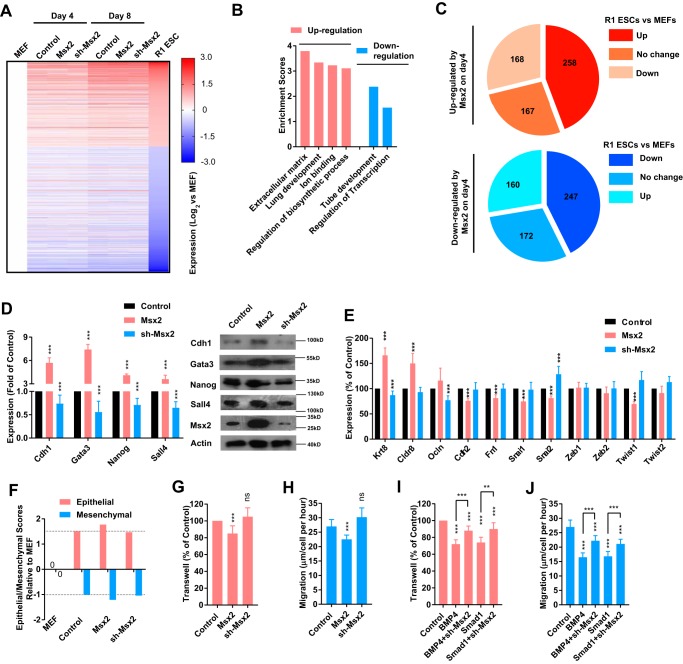Figure 3.
Msx2 up-regulated genes with the ability to promote reprogramming. A–C, a lentivirus encoding Msx2 or shRNA against Msx2 was delivered to MEFs. The expression profiles of cells were assayed on day 4 and day 8 during reprogramming with RNA-seq. MEFs and R1 ES cells were used as controls. Genes having significantly higher (over 2-fold) or lower (below 50%) expression in R1 ES cells than in MEFs were analyzed (A). Genes that were significantly regulated by Msx2 on day 4 were subjected to GO analysis (B) and categorized into three groups based on their expression in R1 ES cells and MEFs (C). D and E, a lentivirus encoding Msx2 or shRNA against Msx2 was delivered to MEFs. The expression of the indicated genes was determined with qPCR on day 4 of reprogramming. F, epithelial and mesenchymal scores relative to MEFs were calculated basing current RNA-seq. G–J, the ability of cells to migrate was determined with a transwell assay or with a live-cell tracing system that measured the migration distances of cells. Cells were modulated from different aspects of BMP4–Smad1–Msx2. All experiments except RNA-seq were repeated at least five times. One-way ANOVA with Dunnett's post hoc test was used. **, p < 0.01; ***, p < 0.001; ns, not significant.

